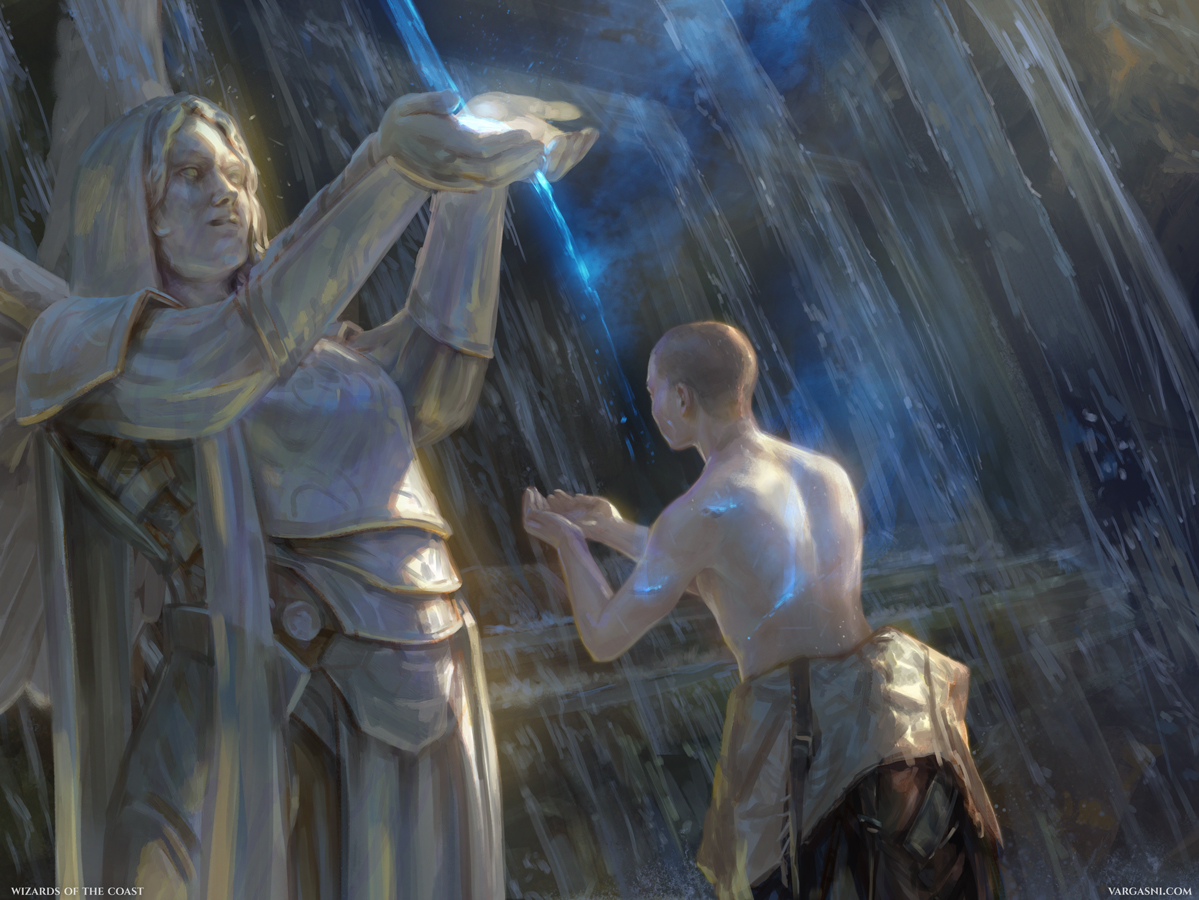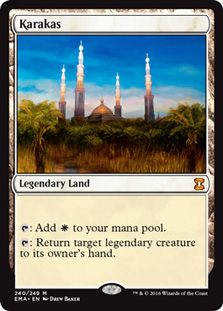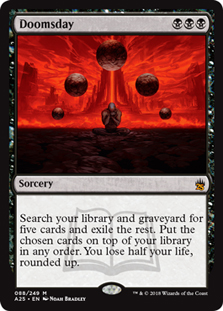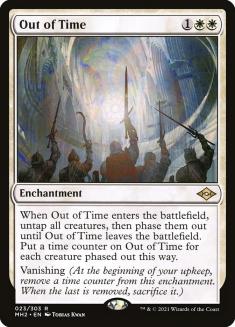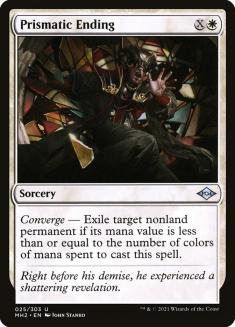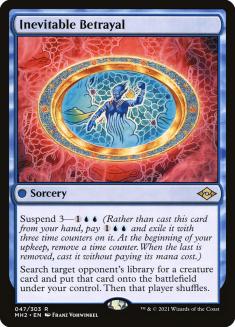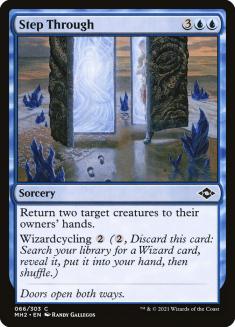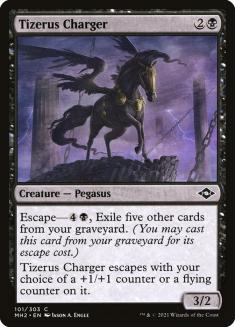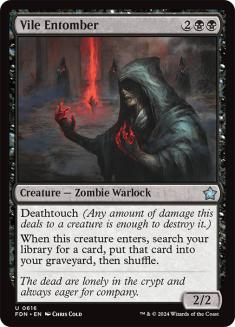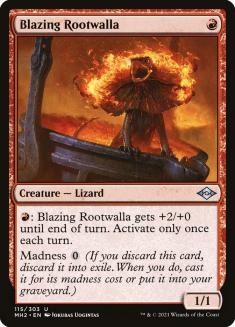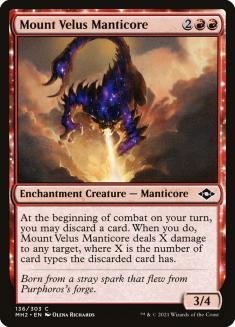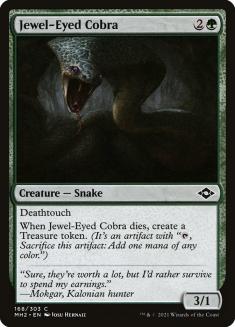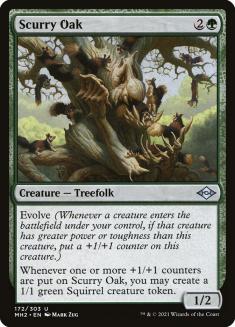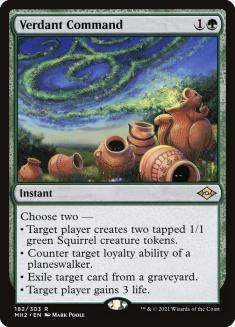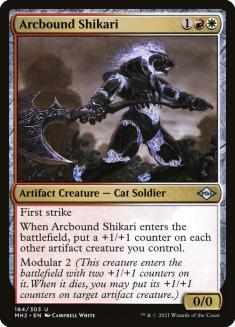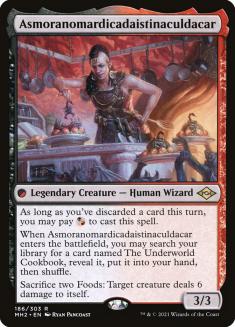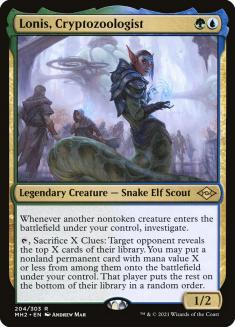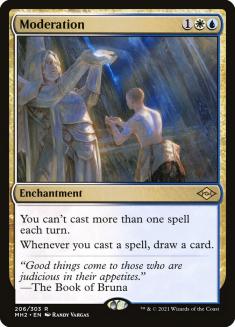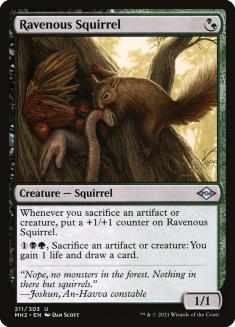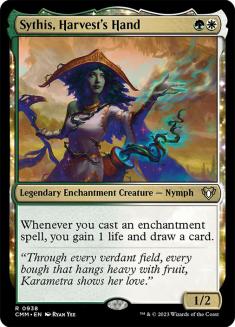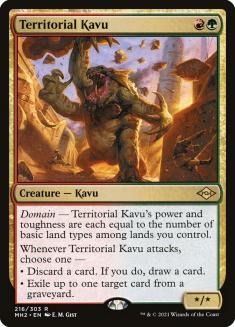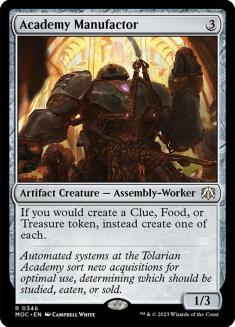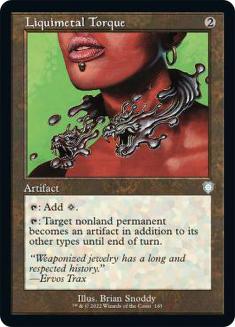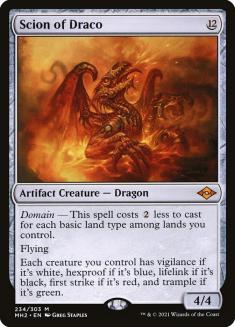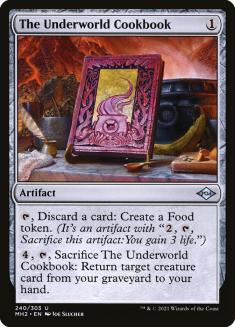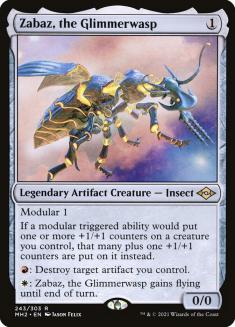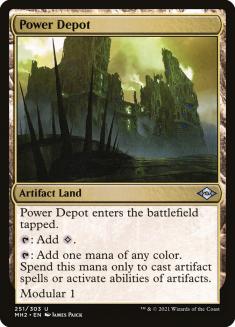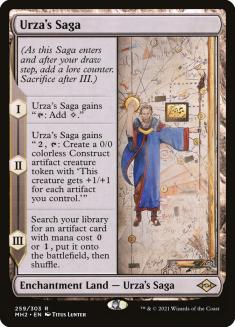Now that the full set has been previewed, I’d like to discuss my experience working with WotC on Modern Horizons 2 in more detail. Today, I’m going to look through the set and try to think of all the impact I had, but I don’t have access to WotC’s database of card notes, so I’m doing this from memory. This means I might misremember some things or forget other things. Regardless, I’m going to try to keep this as accurate and thorough as possible.
I’d also like to add a disclaimer that I don’t mean for anything I say to indicate that any particular change wouldn’t have happened without me. I’m not trying to make it look like this set was going make a lot of mistakes and I saved the day. At the beginning, everything is intentionally on the strong side, and the process is to figure out how much worse things need to be, so when I suggested making a card weaker, it’s likely that still would have been identified without me. Also, I’m admittedly writing this largely to have a record for myself while I remember as much as I can, but I imagine some of the stories about how cards got where they are will be interesting.
Before I get to the cards that are in the set, I want to start with some cards that aren’t in the set, which is where my work started. When I arrived at WotC’s office, the first thing I did was look over the list of all the cards that were going to be reprinted into Modern. This was an easy starting place because it was a list of cards I was already familiar with and could anticipate the impact of.
Karakas
Karakas was slated to be the box topper/buy-a-box promo for the set (the role that is now Sanctum Prelate). I believe Karakas would be one of the worst cards that could possibly be added to Modern as far as its impact on future card sales, and that it would also make the format a lot less fun and diverse. The issue with Karakas is that opposing legendary creatures are absolutely horrible against it, so its presence would “soft ban” almost every legendary creature from the format. Given that a higher and higher portion of interesting creatures in new sets are given the legendary status to appeal to Commander players, this would keep tons of future interesting designs out of the format.
Removing Karakas from the file was my highest priority, but I was able to accomplish that in the first day there, which set the tone for how quickly I could make changes (which was encouraging).
Doomsday
The other card I remember removing from the reprint list was Doomsday. This was simpler. I’ve never played a Doomsday deck, and always found it a little hard to process, so I asked if I should try to build a Doomsday/Thassa’s Oracle deck, but as soon as I mentioned the combo, I was told not to bother and the card was removed from the set.
There were a few other cards on the list I had concerns about and tested, but nothing else I ultimately thought would be bad to reprint. I was worried about Titania, Protector of Argoth, for example, but without Wasteland, I couldn’t really break it. There’s not as much work to do with reprints; either you reprint them or you don’t and you can’t change the numbers unless you’re making a new card, so I didn’t ultimately have an impact on any card other than those that I suggested removing. So for the rest of this, I’ll be discussing new designs. My method is just going to be reading through the set and making notes as I recognize cards I suggested changes for.
Out of Time
When I first played with Out of Time, it cost 1W and exiled all nontoken creatures, got a counter for each creature exiled in this way, had vanishing, and returned all creatures to the battlefield under their owners control when it left the battlefield. I played this in a Yorion, Sky Nomad value pile. This was one of the first Yorion decks I built. Companions were not nerfed at this point, and everyone else was skeptical that Yorion would be playable in Modern (we argued about that a lot).
With this and Flickerwisp and Yorion, I was able to loop a bunch of creatures to keep my opponents creatures exiled forever while I drew increasing numbers of cards every turn. Aaron Forsythe increased the casting cost from 1W to 3WW while watching some games with that deck. Eventually it dropped back to 2WW. The solution of phasing creatures out so that you can’t abuse it in this way happened after my contract ended and allowed the cost to drop back to 1WW, and I think this is a fantastic change to the card. They had been imagining it as a temporary sweeper, not a value engine, but that certainly wasn’t how it would be played without the phasing switch.
Prismatic Ending
This was an instant. I suggested that it was probably the most powerful removal spell in Magic at that rate and its ubiquity at that point would be a problem. Moving it to sorcery was the cleanest nerf, where the other option was to try to change the templating to only count mana used to pay X. I still think this card is incredible, but sorcery speed is a very real cost for a removal spell that means this isn’t the automatic first choice.
Inevitable Betrayal
For a long time, this card was going to be Tinker instead of Bribery. It’s surprisingly difficult to find iconic blue sorceries that play well as costless suspend cards. I think Blatant Thievery was also given serious consideration. I thought Tinker was a little too dangerous. I was open to the idea of a slightly reworded Tinker that worked like Polymorph in that it had to target something rather than sacrificing as a cost so that an artifact removal spell could counter it, but the team didn’t like the idea of printing a different version of an iconic card here, so I advocated for Bribery, which I think they’d mentioned was on their list of considerations. Compared to the alternatives, I think this is a good choice. It’s powerful and exciting, but you can’t really build your whole deck around casting it for free, since it’s bad against some opponents.
Step Through
This used to cost only one mana to Wizardcycle. I didn’t come up with a specific deck that broke it, but did express discomfort with the card at that rate. I’m glad it was changed.
Grief
I think the first version of this that I saw was a 3/1 for 1BB that cast Unmoored Ego. I don’t remember if it had menace. I think blinking and Unearthing this is even more miserable for the opponent than the current iteration of Grief. I wanted to find a different thing for it to do and to make sure it cost four mana so it couldn’t be returned with Unearth. I don’t remember Coercion/Unmask as a design we considered, but I also don’t remember what the design was when I left. I think we weren’t happy with it. I have concerns about where it ended up, but we’ll see how it plays out.
Hell Mongrel
We were brought in as outside consultants for expertise in Modern, and we were instructed to focus on Constructed. I have a lot of thoughts about evaluating cards and environments for Limited, so I asked for permission to spend around a day working on Limited. I believe one piece of feedback I gave was lowering the cost of this card from 4B to 3B because the strength of the Madness deck was a little too swingy based on your ability to stick an enabler, so I wanted the fail state of this card to be less punishing.
Tizerus Charger
Another result of my efforts on Limited is that I noticed that Dimir was really good at filling the graveyard, but didn’t really get anything for doing it, and was pretty bad at ending games. I suggested a common finisher with escape to tie the archetype together. The first design we created was much bigger and more expensive, and I’m guessing it ended too many games for a common. I’m glad they settled on making it smaller while keeping the evasion, I think this should do a good job of rewarding your for being able to escape it multiple times, which was something I wanted, and a concern with the bigger version was that doing it once likely ended the game. So this isn’t a design I saw before I left, but I believe I inspired putting escape on a black common in the set.
Unmarked Grave
The team was resistant to printing a strictly worse Entomb at rare, so they wanted this card to have some minor upside. When I first saw it, it had cipher, which I think was considered a cute puzzle that didn’t add a lot of power to the card. I built decks around Carrion Feeder and Bloodghast that used this to get a lot of Bloodghasts in the graveyard to make the case that cipher shouldn’t be on the card, and argued that the clean design was fine here.
Vile Entomber
This card used to cost 2B, and it was way too strong as a followup to Priest of Fell Rites. I built a sweet Aether Vial Reanimator deck with this, Imperial Recruiter, and Young Necromancer. I think they’d wanted this card primarily for Limited, where it was also way too good. This cost was likely intended to keep it out of Modern, but I think it could have a chance.
Blazing Rootwalla
I believe this card used to have two power, and I think I remember that being obviously too pushed, not much of a story here though.
Mount Velus Manticore
I think this card is a result of my limited analysis suggesting that the red commons were too siloed, that they were either clearly for madness or clearly for affinity, and there needed to be more flexible red commons. This works well with affinity because the artifact cards often have two types, and it’s a discard outlet for madness. I wasn’t responsible for this specific design, and I think it’s different than what was there when I left, but like with Tizerous Charger, I think it’s filling a hole I identified.
Jewel-Eyed Cobra
This used to make two Treasure tokens when it died, which was so terrifying in Limited you could just never risk getting into combat with this. I pushed to reduce it to one Treasure token.
Scurry Oak
This was a miserable common to play against.
Verdant Command
A goal for this set was to create reasons to play basic lands that weren’t snow-covered. One of the modes on this card was “Target player sacrifices a snow permanent,” which I hated as a solution because two mana for two 1/1s and a Stone Rain was absolutely devastating against snow decks. It lead to a weird situation where no one should play snow if anyone was playing this card, but no one other than dedicated Squirrel decks could really play this card if people weren’t playing snow lands, and I didn’t like the swingy nature of the metagame there. I think destroying snow lands was added to Break the Ice instead, and that’s a much better solution.
Arcbound Shikari
This used to cost two mana, and I think it was probably a 1/1, and it put counters on itself as well. I didn’t like how quickly it scaled out of control in Limited, and pushed for the bigger design that rewarded being on the play a little less.
Asmoranomardicadaistinaculdacar
This went through a lot of designs. It used to have madness, which made a lot more sense, since madness is a supported mechanic in the set and works as a cool workaround to a card without a casting cost. Because this is a legend, it was important to the team that it be a functional Commander, so it had to have text about using it from the command zone, but I hated referencing the command zone on a non-Commander product that was a cool design by itself. Ultimately, we had to sacrifice the aesthetic beauty of madness to avoid the aesthetic disaster of calling out the command zone. It had a number of totally different text boxes, but I don’t remember what it used to do.
Lonis, Cryptozoologist
I don’t remember exactly what this used to do, but I believe that it got nerfed as part of my exploration of Yorion, Sky Nomad.
Moderation
This card was inspired by a suggestion of mine from an earlier remote consulting contract on the set. I found the original email I sent that inspired this card and realized that it’s more different than my original submission than I remembered. This design captured the space I was going for, so I recognized it, and my memory just substituted this for what I’d submitted. My actual submission was:
1U
Enchantment
At the beginning of your upkeep, draw a card.
You can only cast one spell per turn.
Before I saw it, it was changed to WU, and you drew a card when you cast a spell, but could only cast one spell per turn, so harder to cast, but likely drew twice as many cards a lot of the time. That design was scary, so it was increased to three mana. At three mana, I think the investment is too high in Modern. In discussing it with people, it seems many people think two mana is too strong, and three mana is too weak, so it’s hard to fix. This makes me wonder if the best solution was closer to my original submission, which keeps the cost low enough that you can more likely afford to take the turn off to cast it, but doesn’t pay off as explosively. The lower payoff isn’t actually that much lower, since the card makes it hard to use extra cards anyway.
Now I wish I’d remembered my original design when we decided to increase the cost.
Ravenous Squirrel
A lot of Squirrel cards used to be stronger, and I haven’t mentioned most of them here because my involvement in that was minimal. I participated in meetings about how to nerf Squirrels, but didn’t drive most of the changes. I don’t remember exactly what ability Ravenous Squirrel used to have (it might have been the same), but it used to grow when you sacrificed any permanent, and I believe I pushed to make it not grow from fetchlands.
Sythis, Harvest’s Hand
This used to be a constellation ability, meaning it drew for itself. It was way too strong. I was playing this with only a few other enchantments with Yorion because it was so great by itself. I don’t remember for sure if it always had the extra toughness or if it gained that when we made it not a cantrip.
Territorial Kavu
This is a card that I spent a lot of time unsuccessfully trying to nerf. When I left, it hadn’t been nerfed, but I left with a plea to reevaluate. I don’t remember exactly what it’s abilities were when I left, but it generated raw card advantage when it attacked, and I’m glad to see it scaled back some.
Academy Manufactor
This card used to cost two mana, and it was pretty crazy in some Lurrus + Food decks, since it was easy to get multiple copies in play to make nine or 27 objects at a time. We didn’t test it a lot at three mana, but I think it’s easy enough to kill at this rate.
Liquimetal Torque
I’d played a bit with the Karn/Liquimental Coating/Emry/Ancient Grudge deck and pushed to add the nonland clause to this card.
Scion of Draco
This card used to be an 8/8 or 9/9 flying trampler that you could cast on Turn 2 with a triome and a shock land. It and Territorial Kavu were theoretically an effort to revitalize Domain Zoo. I argued that they’d never do that, that both want you to play triomes and to protect them with Thoughtseize/Stubborn Denial, not to support them with Wild Nacatl and Tribal Flames — threats that end the game by themselves aren’t looking for other threats to support them. These cards both didn’t accomplish their design intent, and they were strong enough that I thought they should just be splashed all over the place, enabled by random off-color triomes. Scion of Draco was toned down a little earlier than Territorial Kavu.
The Underworld Cookbook
This original cost two mana and had some other output when you discard (I don’t remember what). After testing madness decks in Modern, it became obvious that the deck needed a reliable one-mana discard outlet/engine, because you can’t really afford to wait until Turn 2 to do that. Fortunately, making a Food token was a good flavor win and an appropriate effect for a one-mana artifact. I wanted the card to stop at the first line, since that seemed really elegant to me, and it was paired with Asmor, which already had a lot of text, but the team wanted the second ability.
Zabaz, the Glimmerwasp
I don’t remember exactly which activated abilities this used to have, but it doubled all of your modular triggers, which was way too strong.
Power Depot
This card didn’t enter the battlefield tapped, and it was just way too strong in Hardened Scales. We tried to find other solutions, but I pushed hard to make it enter tapped (it was just too good any other way).
Urza’s Saga
This used to tap for one mana, then one mana, then three mana. This was way too strong. It didn’t require any work, just a little advanced planning about which turn to play it on. I think it was most problematic with Primeval Titan.
There are a lot of other things that changed, and a lot of discussions I was part of, but these are issues I specifically remember pointing out. There are also some notable changes I wanted that didn’t happen. I wanted Persist to cost three mana and I wanted Archon of Cruelty to only trigger on entering the battlefield, not also on attacking. I’m a little worried about how much Reanimator was pushed, and generally suggested that it’s better to start by making cards that cost one less than the best rate available in the format rather than two less, but Reanimator is theoretically a relatively easy deck to hate, so overshooting on the power level a little might not be too bad.

